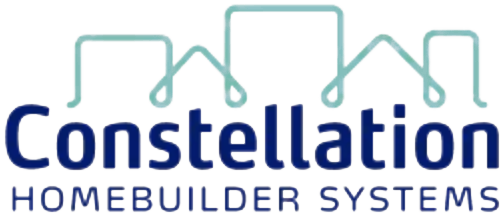Technology
Public Vs. Private Builder Battles Spark Amid New A.I. Imbalances
These asymmetries are particularly important as homebuilding strategies for survival now and thriving later hinge on precision-managing tiny place-and-time windows of opportunity that close if you're not there to jump on them.

Animus between leaders of public homebuilding enterprises and privately held firms 10 or 15 years ago was storied, energized by fierce competitiveness and large, colorful, maverick egos.
These days the rhetoric and "we're better" bluster has quieted down a lot. A decade-plus of gradual growth and prosperity no matter how big or small you were led ultimately into the explosive post-Covid juggernaut of supply-chain havoc, unslakable buyer demand, and historical profits.
Business leaders – public and private – were either too busy or too damned successful to worry much about the contrasts between public national builders and privately-held organizations operating in single-, multiple, regional, multi-regional, and national footprints. Below the radar, entrepreneurial, privately capitalized firms stood fast in their faith that they offer greater value, both to their team member associates, to land-selling partners, and to customers, thanks to their reliance on trusted relationship-building and the discretion and control they have over resource allocation, overheads, commitments, and investments.
Public homebuilding leaders, meanwhile, pride themselves and their organizations as offering superior value via better, more professionalized systems, better data, and smoother, less erratic resources allocation into sourcing – land, materials, trade crews, etc. – at scale that benefits customers on average selling prices and desirable locations, etc.
Meanwhile, money – i.e. the cost of capital – leveled out the animosity somewhat, because it was plentiful and relatively cheap. This meant private firms could compete with publics pretty close to dollar for dollar for land, talent, and home-buying customer acquisition.
Well, get ready for Us Versus Them Redux.
Here's a recap of the backdrop as to why:
- A slow-moving regional and local bank crisis,
- a down-to-the-wire debt ceiling standoff,
- a heaving and buckling macro economy that's seemingly forever on the verge of negative GDP growth,
- nagging signs of weakness on the U.S. jobs front
- all directly or semi-related to high inflation and a Fed counter assault on inflation with a rapid run up in its funds rate
While easier money tended to level – tolerably – the playing field for public and private homebuilders, the deal's off.
The asymmetries are big and meaningful, and they're now not just about access to capital, which, by the way, has put public homebuilders and a couple of dozen foreign-based-company-owned regional power players in a position to crush local competitors on marketshare in America's most active new-home markets.
What's equally imbalanced is the current readiness – at the dawning of A.I.'s new era of applied business solutions – among public national enterprise homebuilders to leverage unified data throughout their circulatory systems of operations and value creation.
That imbalance is particularly important as homebuilding strategies for survival now and thriving later have become a matter of precision-managing tiny place-and-time windows of opportunity that close if you're not there to jump on them.
As we've written earlier:
Now, more than ever, builders should know how their productivity, revenue, and costs are changing in real-time. That is the baseline for data analysis, and until now, it hasn’t been readily available to many builders. Today’s leading homebuilders succeed by reacting to up-to-the-minute shifts and making smart decisions quickly. Without the access to good data, homebuilders run the risk of missing an opportunity to make timely improvements. We know this is key to the success of any business, and it becomes even more actionable when you can financial and operational comparisons to other well-run businesses.” – Bob Swainhart, Vice PresidentEnterprise Solutions Group, Constellation HomeBuilder Systems
Let's unpack some contrasts, and you can decide how important they'll wind up being as a volatile and uncertain economic and housing market backdrop play out.
- Resources and Budget: Large publicly traded enterprises often have more substantial financial resources and larger budgets compared to small to medium-sized privately held homebuilding firms. This allows larger enterprises to allocate significant funds towards adopting and implementing A.I.-powered data solutions. They can invest in infrastructure, hire specialized A.I. talent, and procure advanced A.I. tools. On the other hand, smaller firms might face budget constraints, limiting their ability to invest in these technologies.
- Organizational Structure: Large enterprises usually have a more complex organizational structure, with multiple departments and hierarchical levels. Implementing A.I.-powered data solutions across such a structure can involve coordination challenges and resistance to change. In contrast, small to medium-sized firms often have simpler organizational structures, enabling quicker decision-making and more straightforward implementation of AI solutions.
- Data Availability and Quality: Large enterprises typically generate vast amounts of data, making it easier to feed A.I. algorithms and derive meaningful insights. They often have established systems for collecting, storing, and analyzing data. In contrast, small to medium-sized firms may have limited data availability, making it challenging to train A.I. models effectively. Data quality can also be a concern, as smaller firms may have less sophisticated data management processes.
- Implementation Speed and Flexibility: Large enterprises may face slower implementation processes due to their size, extensive stakeholder involvement, and complex decision-making structures. Changes in IT infrastructure or ERP systems might require significant planning and coordination. In contrast, smaller firms can be more agile and nimble in adopting A.I. solutions. They can quickly evaluate and implement new technologies without being encumbered by layers of bureaucracy.
- Customization and Integration: Large enterprises often require customized A.I. solutions to align with their complex multi-regional and divisional processes and systems. They may need integration with existing ERP systems or other software platforms. Smaller firms, with simpler operations and fewer legacy systems, might find it easier to adopt off-the-shelf A.I. solutions without the need for extensive customization or integration efforts.
- Customer Engagement: Large enterprises have a wider customer base and more extensive resources for managing customer relationships. They can leverage A.I.-powered customer management systems to analyze vast amounts of customer data, personalize interactions, and enhance customer experiences at scale. Small to medium-sized firms, with a smaller customer base, might have more personalized relationships and may not require advanced AI-powered customer management solutions to the same extent.
Competitive Advantage: AI adoption can provide a competitive edge to both large and small firms. However, large enterprises may already have established market positions and brand recognition. Implementing A.I.-powered data solutions can help them strengthen their market position further. For small to medium-sized firms, A.I. adoption can be a means to gain a competitive advantage and level the playing field against larger competitors.
A big factor we imaging will impact the race to embrace A.I. in homebuilding operations and strategy is culture. Rugged individualists such that many homebuilding entrepreneurs are and pride themselves in being, many of them scoff at any notion of "A.I. technologies ... taking on tasks that had previously required human intelligence to complete." They'll have to get over bot skepticism or risk their own peril. Plus, they have to figure out how to simply get going.
A Harvard Business Review essay this week notes:
Most people who work on data science, AI, and digital transformation are painfully aware that it is often culture, not technology, that stymies their efforts. Many even know the high-level steps they’re supposed to take to fix this problem — invest attention and money into changing people’s mindsets and how the company uses data. But once companies and leaders get into the nitty-gritty details of how to do this, it can be hard to know what implementing those steps actually looks like."
Here are some opportunity areas and challenges that may arise as privately held homebuilding firms work to level the playing field at a juncture when margins for error appear to be almost non-existent:
Opportunity Areas:
Enhanced Data Analysis: A.I. can provide advanced data analysis capabilities to ERP systems, allowing companies to gain valuable insights from their financial and operational data. This can help identify cost-saving opportunities, optimize resource allocation, and improve decision-making.
Streamlined Processes: A.I.-powered automation can streamline various processes within ERP systems, reducing manual efforts and improving efficiency. Tasks like data entry, document management, and financial reconciliations can be automated, freeing up resources for more strategic activities.
Risk Assessment and Mitigation: A.I. algorithms can analyze market trends, financial data, and risk factors to provide improved risk assessment and mitigation strategies. This can help homebuilding and real estate companies navigate the challenges posed by a regional and local bank crisis, enabling better financial planning and investment decisions.
Personalized Customer Experience: A.I. can enable ERP systems to gather customer data and provide personalized recommendations and services. This can enhance customer satisfaction and retention, even during a crisis, by understanding customer preferences, predicting their needs, and tailoring offerings accordingly.
Challenges:
Limited Access to Capital: In a slow-moving bank crisis, small to medium-sized companies might face challenges in obtaining loans or accessing capital for their operations, including ERP system upgrades. This could hinder the adoption of A.I. technologies and limit the potential benefits they can bring.
Data Quality and Integration: A.I. relies on large volumes of high-quality data to generate accurate insights. If data within the ERP system is incomplete, inconsistent, or of low quality, it can impact the effectiveness of A.I. algorithms. Integrating data from disparate sources can also be challenging, requiring data cleansing and standardization efforts.
Skill Gap and Change Management: Implementing AI within ERP systems requires specialized skills and expertise, and a business culture willing to commit and invest in them. Small to medium-sized companies might face challenges in finding and training personnel with the necessary A.I. knowledge. Additionally, managing organizational change and ensuring smooth adoption of A.I.-powered ERP systems can be a significant undertaking.
Privacy and Ethical Concerns: A.I. involves processing and analyzing sensitive data, raising concerns related to privacy and ethics. Compliance with data protection regulations and ensuring the ethical use of AI algorithms becomes crucial. Striking the right balance between data-driven insights and protecting customer privacy can be a challenge.
Cost Considerations: Implementing A.I. technologies within ERP systems can come with significant upfront costs, including investment in infrastructure, software, and A.I. talent. For small to medium-sized companies facing financial constraints due to a bank crisis, managing these costs can be a challenge.
While A.I. offers opportunities for improving ERP systems in the homebuilding and residential real estate sector, they'll likely create a bigger more aggravating wedge of advantage vs. disadvantage between large public companies and smaller private ones. Navigating the challenges associated with a bank crisis and ensuring successful implementation requires careful planning, resource allocation, strategic decision-making, and most-importantly a cultural mindset pivot.
Constellation provides fully-integrated or standalone software solutions expertly engineered to manage the complete ecosystem of a homebuilder’s business functions and growth.
MORE IN Technology
Lennar Taps Into Geothermal To Power New Colorado Homes
A major homebuilder's bet on geothermal heating and cooling for over 1,500 new Colorado homes could pave the way for mainstream adoption as buyers increasingly seek sustainable, energy-saving features.
AI Crushes Missing-Middle Time And Cost Curves Toward Affordability
Developing multifamily rental and for-sale properties takes time — sometimes years -- depending on a labyrinth of zoning rules and the whims of local jurisdictions.
Brandon Elliott’s Next Big Thing: An Uber-Style Building Trades Platform
After selling Elliott Homes to Meritage, the Gulfport, Miss.-based entrepreneur sets his sights on transforming trades with a logistics-tech startup that aims to make construction faster, smarter, and more affordable—starting with siding.


